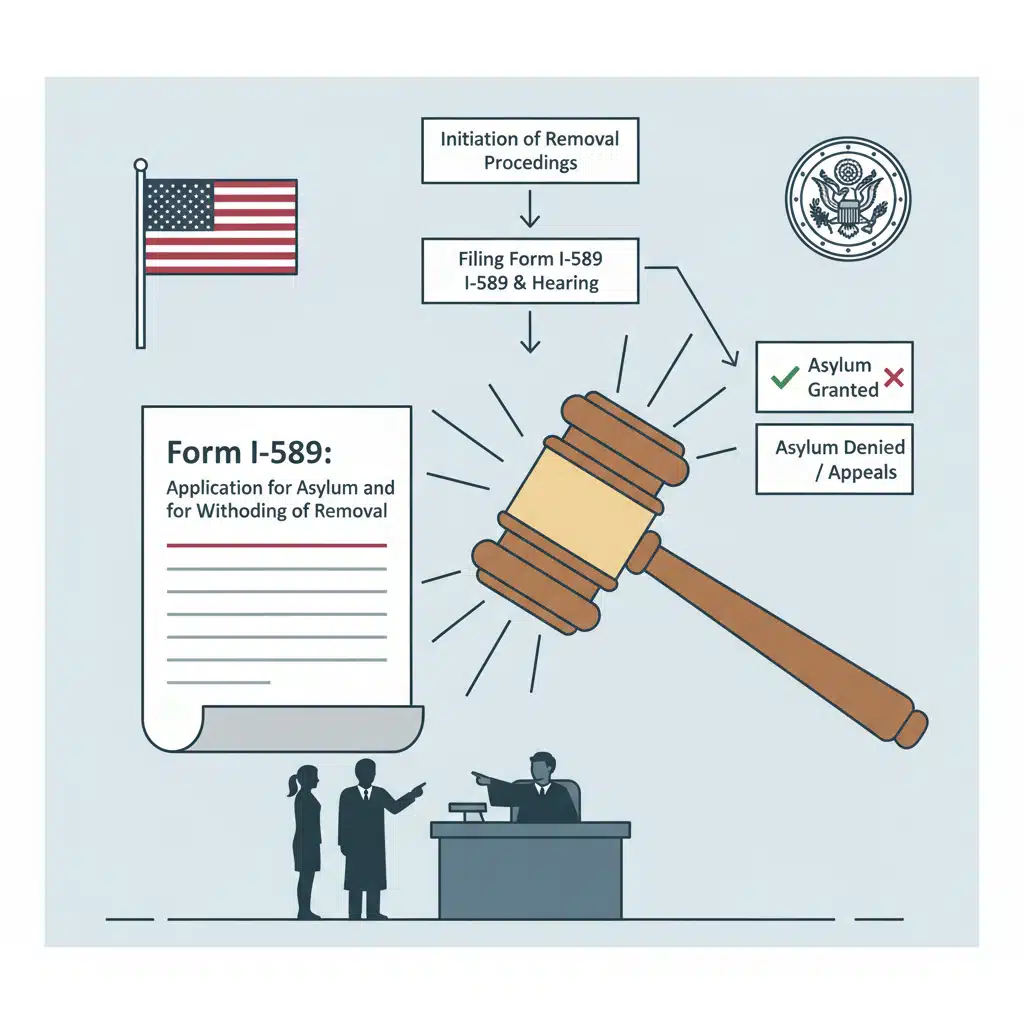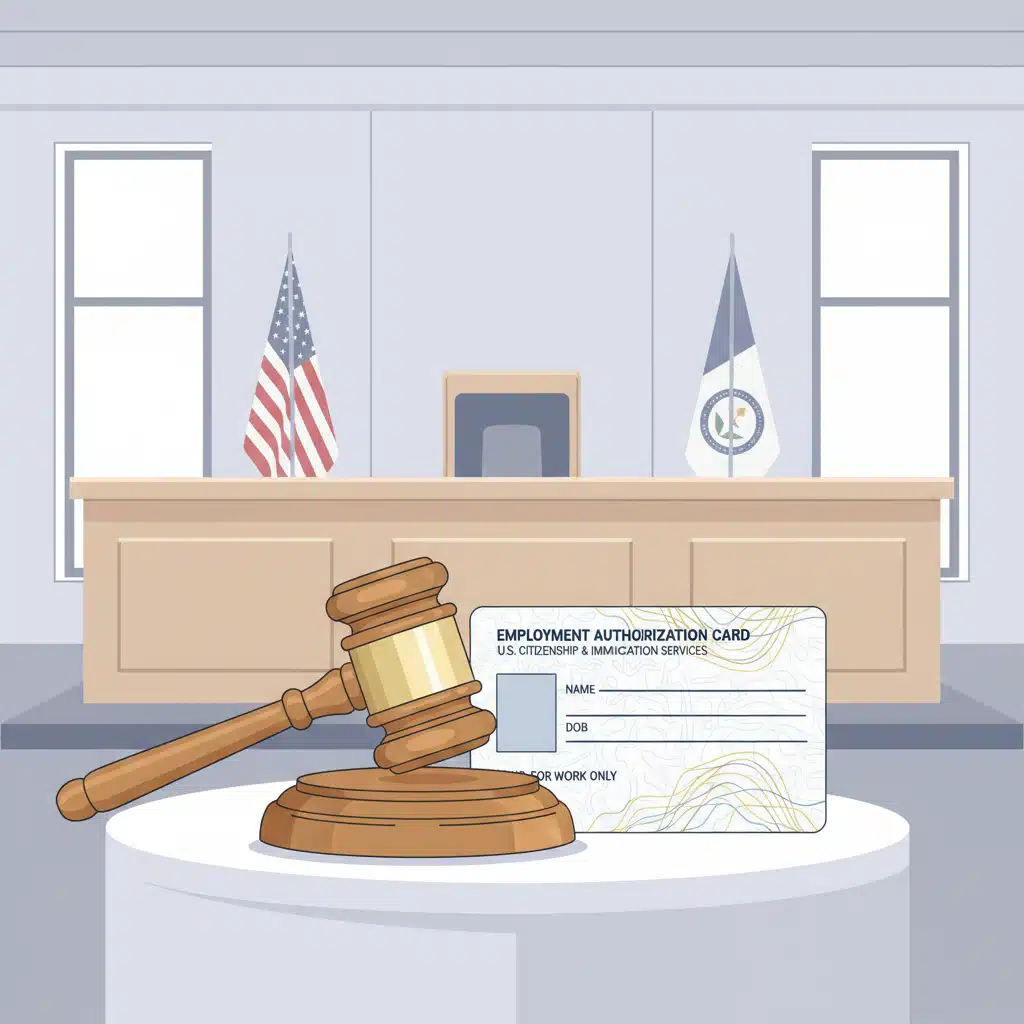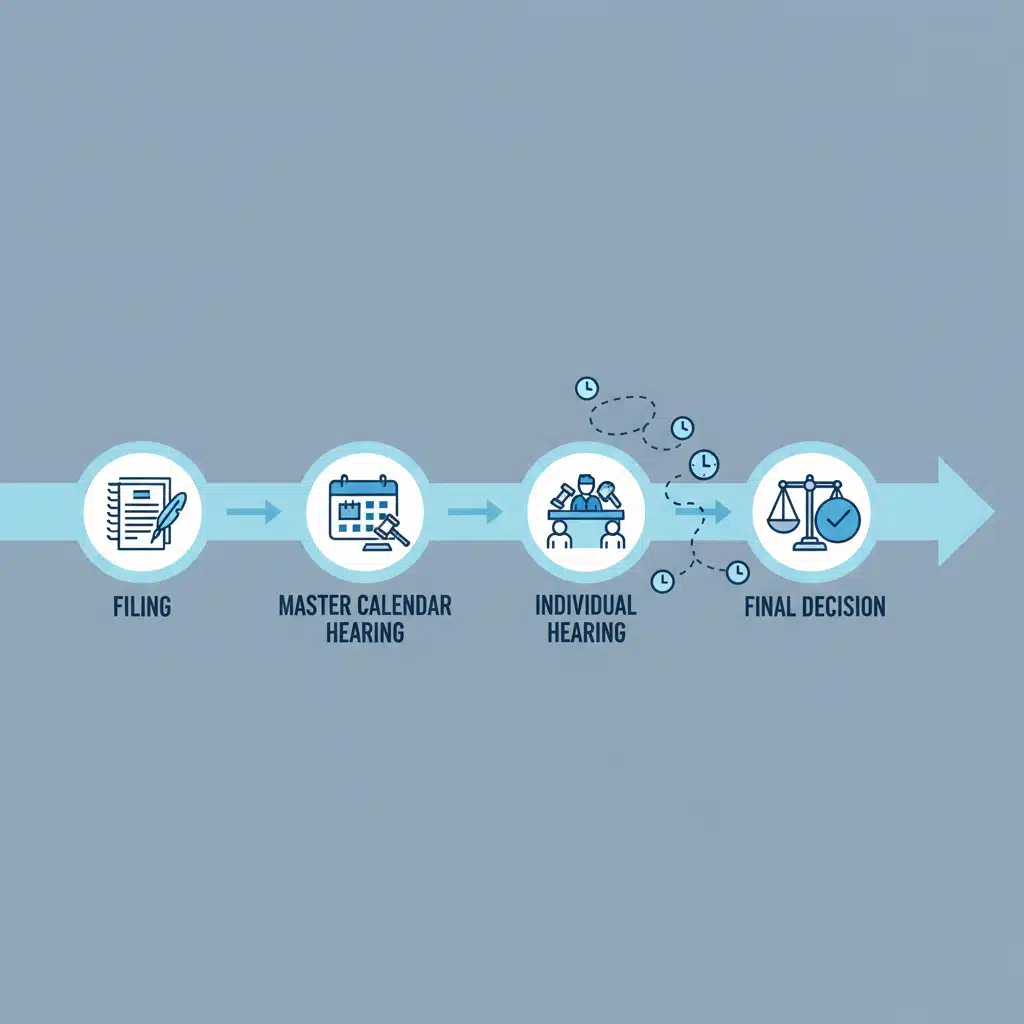Are you facing the possibility of removal from the United States? The cancellation of removal process can be complex and overwhelming, but with the right knowledge and guidance, you can navigate it successfully. In this comprehensive guide, we will walk you through everything you need to know about the EOIR-42B application process, ensuring you have the tools and insights necessary to master the art of navigating cancellation of removal.
Whether you are a lawful permanent resident or an undocumented immigrant, understanding the intricacies of the EOIR-42B application is crucial in securing your stay in the country. From eligibility requirements to the supporting documentation needed, we will cover it all, providing you with step-by-step instructions and expert tips along the way.
With years of experience and a deep understanding of immigration law, our team is here to help you every step of the way. Don’t let the fear of removal control your life – educate yourself and take control of your future. Let’s dive into the complexities of the cancellation of removal process and empower you with the knowledge you need to make informed decisions.
Understanding cancellation of removal
The cancellation of removal process is a legal remedy available to certain individuals facing deportation or removal from the United States. It allows eligible individuals to request relief from removal and potentially obtain lawful permanent resident status. There are two different types of cancellation of removal: one for lawful permanent residents, and another for non-permanent residents.
For lawful permanent residents, cancellation of removal is available if they have been a lawful permanent resident for at least five years, have continuously resided in the U.S. for at least seven years after being admitted in any status, and have not been convicted of an aggravated felony. It is important to note that not all lawful permanent residents are eligible for cancellation of removal, and each case is unique.
Non-permanent residents, on the other hand, must meet different eligibility requirements for cancellation of removal. They must have been physically present in the U.S. for a continuous period of at least ten years, have demonstrated good moral character, and establish that their removal would result in exceptional and extremely unusual hardship to a U.S. citizen or lawful permanent resident spouse, parent, or child.
Eligibility requirements for cancellation of removal
The cancellation of removal is a legal process that allows certain individuals facing removal from the United States to request relief and obtain lawful permanent resident status. This process is available for both lawful permanent residents and undocumented immigrants who meet specific eligibility criteria. Understanding the basics of cancellation of removal is the first step in successfully navigating the EOIR-42B application process.
To be eligible for cancellation of removal, you must meet the following requirements:
1. Length of physical presence: For lawful permanent residents, you must have been physically present in the United States for at least five years, with a minimum of three years as a lawful permanent resident. Undocumented immigrants must demonstrate a continuous physical presence in the United States for a period of at least ten years.
2. Good moral character: You must exhibit good moral character during your required period of physical presence in the United States. This includes avoiding criminal activities and demonstrating positive contributions to society.
3. Exceptional and extremely unusual hardship: To qualify for cancellation of removal, you must prove that your removal would result in exceptional and extremely unusual hardship to a qualifying relative, such as a spouse, parent, or child who is a U.S. citizen or lawful permanent resident.
Meeting these eligibility requirements is crucial in determining if you qualify for cancellation of removal. Once you have established your eligibility, it’s time to understand the EOIR-42B application process.
The EOIR-42B application process
The EOIR-42B application, also known as the Application for Cancellation of Removal and Adjustment of Status for Certain Nonpermanent Residents, is the official form used to apply for cancellation of removal. This form contains detailed information about your personal background, immigration history, and the reasons why you believe you should be granted cancellation of removal.
Here is an overview of the EOIR-42B application process:
1. Obtain the necessary forms: You can download the EOIR-42B application form from the official website of the Executive Office for Immigration Review (EOIR). Make sure to carefully read the instructions and complete the form accurately.
2. Gather supporting documentation: Along with the EOIR-42B application, you will need to submit various supporting documents to strengthen your case. These may include birth certificates, marriage certificates, proof of physical presence, evidence of good moral character, and documents demonstrating the exceptional and extremely unusual hardship your qualifying relative would face if you were removed.
3. Prepare a compelling affidavit: A well-written affidavit can greatly enhance your chances of success. Use this opportunity to explain your circumstances in detail, including any extenuating factors or hardships you and your qualifying relatives would face if you were removed from the United States.
4. File your application with the appropriate court: Depending on your situation, you will need to file your EOIR-42B application with either the Immigration Court or the Board of Immigration Appeals (BIA). Make sure to follow the specific filing instructions provided by the court.
5. Attend your immigration court hearing: After filing your application, you will receive a Notice to Appear (NTA) that includes the date and location of your immigration court hearing. It is crucial to attend this hearing and present your case before the immigration judge.
6. Await the decision: The immigration judge will review your case and make a decision on whether to grant or deny your application for cancellation of removal. If granted, you will be eligible for lawful permanent resident status.
Navigating the EOIR-42B application process can be challenging, but with proper preparation and attention to detail, you can increase your chances of success. Gathering the necessary supporting documents is an essential part of the process.
Gathering supporting documents for your application
Submitting the right supporting documents along with your EOIR-42B application is vital to strengthen your case for cancellation of removal. These documents help provide evidence of your eligibility and demonstrate the exceptional and extremely unusual hardship your qualifying relative would face if you were removed from the United States.
Here are some key documents you should consider including:
1. Proof of physical presence: Gather documents that establish your physical presence in the United States for the required period. These can include lease agreements, utility bills, employment records, tax returns, and school records.
2. Proof of good moral character: Provide evidence that you have maintained good moral character during your required period of physical presence. This can include reference letters, community service records, employment records, and certificates of completion for educational programs.
3. Evidence of exceptional and extremely unusual hardship: Compile documents that demonstrate the hardship your qualifying relative would face if you were removed. This can include medical records, letters from healthcare professionals, school records for children, and affidavits from family members or friends.
4. Personal documents: Include copies of birth certificates, marriage certificates, divorce decrees, and any other relevant personal documents that support your case.
When gathering supporting documents, it is essential to ensure their authenticity and accuracy. If any documents are not in English, consider having them translated by a certified translator. Additionally, organizing the documents in a clear and logical manner can make it easier for the immigration judge to review your case.

Navigating the immigration court system
The cancellation of removal process involves navigating the immigration court system, which can be complex and intimidating for many individuals. Understanding the key aspects of the immigration court system can help you prepare for your hearing and present your case effectively.
Here are some important points to consider:
1. Know your rights: Familiarize yourself with your rights as an individual facing removal proceedings. You have the right to legal representation, the right to present evidence, and the right to a fair hearing.
2. Seek legal counsel: Working with an experienced immigration attorney can greatly benefit your case. An attorney will guide you through the process, help you gather the necessary documents, and provide you with strategic advice on presenting your case.
3. Prepare for your hearing: Thoroughly review your EOIR-42B application, supporting documents, and any evidence you plan to present during your hearing. Practice presenting your case and anticipate potential questions from the immigration judge.
4. Dress appropriately and be respectful: Dressing professionally and demonstrating respect for the court proceedings can leave a positive impression on the immigration judge. This can potentially influence their decision in your favor.
5. Present your case clearly and concisely: During your hearing, clearly articulate your circumstances, emphasizing the exceptional and extremely unusual hardship your qualifying relative would face if you were removed. Avoid emotional outbursts and focus on providing factual information.
Navigating the immigration court system can be challenging, especially for those unfamiliar with the legal system. Seeking professional guidance from an immigration attorney who specializes in cancellation of removal cases is highly recommended.
Tips for a successful EOIR-42B application
Applying for cancellation of removal can be a complex and lengthy process. However, following these expert tips can significantly increase your chances of success:
1. Start early: Begin gathering the necessary documents and preparing your EOIR-42B application as soon as possible. This will give you ample time to review and revise your application before filing.
2. Be thorough and accurate: Pay close attention to detail when completing your application. Provide accurate information and ensure that all supporting documents are included and properly organized.
3. Seek professional help: Working with an experienced immigration attorney is crucial to navigating the cancellation of removal process successfully. They have the knowledge and expertise to guide you through the complexities of the system and help you present a strong case.
4. Craft a compelling affidavit: Your affidavit is an opportunity to explain your circumstances and hardships in detail. Take the time to write a well-structured, persuasive affidavit that clearly communicates the exceptional and extremely unusual hardship your qualifying relative would face if you were removed.
5. Practice your testimony: Prepare for your immigration court hearing by practicing your testimony. Anticipate potential questions from the immigration judge and rehearse your responses to ensure clarity and confidence.
6. Stay organized: Keep copies of all documents and correspondence related to your cancellation of removal case. This will help you stay organized and provide easy access to information when needed.
By following these tips, you can navigate the cancellation of removal process more effectively and increase your chances of a successful outcome.
Common mistakes to avoid during the application process
When applying for cancellation of removal, it is essential to avoid common mistakes that can negatively impact your case. By being aware of these pitfalls, you can take proactive measures to ensure a smooth application process.
Here are some common mistakes to avoid:
1. Incomplete or inaccurate application: Carefully review your EOIR-42B application before submitting it to ensure all sections are completed accurately. Incomplete or inaccurate information can lead to delays or even the denial of your application.
2. Missing or insufficient supporting documents: Failing to provide the necessary supporting documents or submitting insufficient evidence of eligibility can weaken your case. Be diligent in gathering all required documents and ensure they are properly organized and clearly presented.
3. Lack of preparation for the immigration court hearing: Failing to adequately prepare for your immigration court hearing can negatively impact your case. Practice presenting your case, anticipate potential questions, and seek guidance from an immigration attorney to ensure you are fully prepared.
4. Late submission of the application: Timeliness is crucial when applying for cancellation of removal. Make sure to file your EOIR-42B application within the designated timeframe and follow the specific filing instructions provided by the court.
5. Failure to seek professional guidance: Attempting to navigate the cancellation of removal process without the assistance of an experienced immigration attorney can be risky. A knowledgeable attorney can help you avoid common mistakes and guide you through the complexities of the system.
By avoiding these common mistakes, you can increase your chances of a successful cancellation of removal application and secure your stay in the United States.
Working with an immigration attorney for your EOIR-42B application
Seeking professional guidance from an immigration attorney who specializes in cancellation of removal cases is highly recommended. An experienced attorney can provide invaluable assistance throughout the application process, increasing your chances of a successful outcome.
Here are the benefits of working with an immigration attorney:
1. Expertise in immigration law: An immigration attorney has in-depth knowledge of the cancellation of removal process and the relevant immigration laws. They can assess your eligibility, guide you through the application process, and ensure that all necessary documents are submitted correctly.
2. Strategic advice: An attorney can provide you with strategic advice on presenting your case, highlighting the exceptional and extremely unusual hardship your qualifying relative would face if you were removed. They can help you craft a compelling affidavit and prepare for your immigration court hearing.
3. Legal representation: Having a professional advocate on your side during the cancellation of removal process is crucial. An attorney can represent you in court, navigate any legal challenges that may arise, and argue your case effectively before the immigration judge.
4. Peace of mind: Working with an immigration attorney can alleviate the stress and uncertainty that often accompany the cancellation of removal process. They will handle the legal complexities on your behalf, giving you peace of mind and allowing you to focus on other aspects of your life.
When choosing an immigration attorney, ensure they have experience in cancellation of removal cases and a track record of success. Schedule a consultation to discuss your case and evaluate their expertise and compatibility with your needs.
Alternatives to cancellation of removal
While cancellation of removal is a viable option for many individuals facing removal proceedings, it is important to be aware of alternative forms of relief that may be available to you. Depending on your specific circumstances, you may qualify for other types of relief that can help you secure your stay in the United States.
Here are some common alternatives to cancellation of removal:
1. Asylum: If you have a well-founded fear of persecution in your home country based on your race, religion, nationality, political opinion, or membership in a particular social group, you may be eligible for asylum. Asylum grants you protection and the opportunity to remain in the United States.
2. Adjustment of status: If you are an immediate relative of a U.S. citizen or have an approved immigrant petition, you may be eligible to adjust your status to that of a lawful permanent resident. This can provide a path to lawful permanent residency without the need for cancellation of removal.
3. Deferred Action: Deferred Action is a discretionary form of relief that allows individuals to temporarily defer removal proceedings and obtain work authorization. While it does not provide a path to lawful permanent residency, it can provide temporary relief from removal.
4. Prosecutorial Discretion: Prosecutorial Discretion refers to the discretion exercised by immigration officials in determining whether or not to pursue removal proceedings against an individual. If you believe you are a low-priority case, you may be able to seek prosecutorial discretion and have your removal proceedings terminated.
It is crucial to consult with an experienced immigration attorney to explore all possible avenues of relief and determine the best course of action for your specific situation.
Conclusion: The importance of seeking professional guidance
The cancellation of removal process can be complex and overwhelming, but with the right knowledge and guidance, you can successfully navigate it. Understanding the eligibility requirements, gathering the necessary supporting documents, and presenting a strong case are all essential for a successful EOIR-42B application.
Seeking professional guidance from an immigration attorney who specializes in cancellation of removal cases is highly recommended. They have the expertise and experience to guide you through the complexities of the process, increase your chances of






